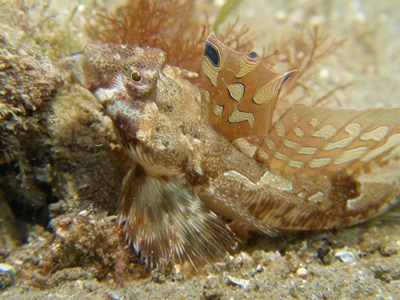General Description
Body long, tapering towards tail; head depressed, eyes close together on top; mouth small, opening forward and downward; dorsal fins separate, pelvic fins large. Top of head and body with blue-edged whitish blotches or spots, and striated bands on side; males with bands of blue spots on tail and blue and orange lines on anal fin. To 13 cm.
Biology
The most common callionymid in Victoria's Port Phillip Bay.
Habitat
Bays and shallow offshore waters on muddy, sandy or shelly bottoms, in depths of 3-50 m.
Soft substrates
Distribution guide
Southern Australia.
Species Group
Fishes › Stinkfishes and dragonets
Depth
Shallow (1-30 m)
Deep ( > 30 m)
Water Column
Max Size
13 cm
Commercial Species
No
Global Dispersal
Native to Australia
Conservation Status
- DSE Advisory List : Not listed
- EPBC Act 1999 : Not listed
- IUCN Red List : Not listed






